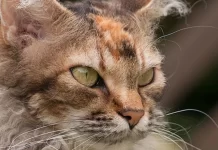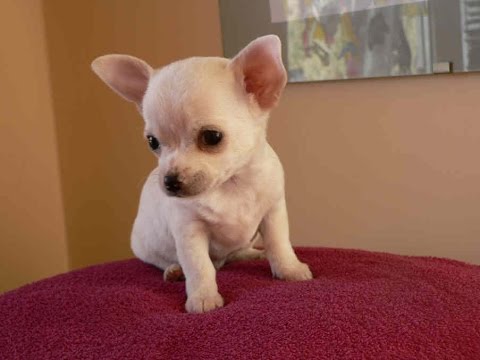Last Updated on January 2, 2024 by Fumipets
Curly-Haired Cat Breeds
A breed of cat with curly hair may be a perfect choice if you’re looking for a cat that is really different. There are just four curly haired cat breeds in the whole globe since they are so uncommon. Learn more about each of them so you can decide which of these uncommon breeds would be the best for you and your family.
What makes a curly cat breed?
Many cat breeds with curly hair are referred to be “rex” cats. In doing so, it is acknowledged that these cats’ wavy or curly hair is the result of a genetic abnormality. Numerous animals, including horses, rats, rabbits, dogs, and cats, have the gene for curly hair. The mutation changes the hair’s structure, turning it from straight to curly.
All cat breeds with curly hair, sometimes known as rexed cats, are the product of a natural genetic mutation. Due to the rarity of this, just four rex cat breeds have received formal recognition from the largest breed organizations, including the Cat Fancier’s Association and the International Cat Association.
Since each breed of cat with curly hair has a unique genetic mutation, their curly coats vary greatly from one another in terms of texture. Some kinds of curly-haired cats, such as the Devon Rex, are wholly devoid of an undercoat, giving them a short, velvety coat made up of guard hairs. Others, like the Selkirk Rex, have thick, abundant coats that may have either short or long hair.
The 4 Curly Haired Cat Breeds
1. LaPerm
| Lifespan: | 10 – 14 years |
| Temperament: | Active and affectionate |
| Coat Colors: | Black, white, red, blue, chocolate, cream, fawn, cinnamon, and lavender, with different shadings and patterns |
| Weight: | 5 – 10 pounds |
| Shedding: | Low |

A litter of kittens born in 1982 at a farm near Dalles, Oregon, gave rise to the LaPerm, a natural breed. One of the kittens, who was eventually given the name Curly, was born hairless but over time began to grow silky, curly hair. Later, this kitty gave birth to her own litter of kittens with curly hair.
A breeding program was established in 1992 since the farm’s curly-haired cats had previously been let to reproduce without restriction. The breed’s wavy, permed-looking coat is what gave rise to the moniker LaPerm. Once the breed gained more notoriety, there was a lot of interest in it.
LaPerm cats are very loving and like being around their owners. They are also quite in sync with their owners, so even though they like being active, they are perfectly content to sit down and unwind with you. Whether they have hair or not, LaPerm kittens nearly always lose their coat before it gradually comes back by the time they are 6 months old.
These clever cats like learning new tricks, and clicker training is a wonderful way to strengthen your relationship with your cat and teach them new skills at the same time. A LaPerm will be content as long as their owners provide them love and care.
2. Selkirk Rex
| Lifespan: | 15 years |
| Temperament: | Outgoing and confident |
| Coat Colors: | Black, white, cream, red, lavender, and chocolate, with different shadings and patterns |
| Weight: | 6 – 12 pounds |
| Shedding: | Moderate |

The Selkirk Rex is a more recent natural breed that was found by Jeri Newman in Montana in 1987. It is also referred to as the “Poodle Cat.” A litter of ordinary kittens included a cat with curly hair and curly whiskers. The kitten, dubbed Miss DePesto after a character on the then-popular TV program “Moonlighting,” may have inherited the mother cat’s gently waved hair via a mutation in the gene.
DePesto produced a litter of six kittens when mated to a Persian cat, three of them had curly hair while the other three had a regular coat. The Selkirk Rex was given its name in honor of Jeri Newman’s stepfather. As a result, the Selkirk Rex cat breed is the only one whose name is derived from a human.
Selkirk Rex cats may be born with curly or straight coats and short or long fur. The Selkirk Rex is gregarious, self-assured, and people-focused. They get along with other pets well and like living in a busy home. Due to their thick coats, they do shed very regularly, therefore they need regular brushing to keep stray hairs under control.
Selkirk Rex are strong, chiseled cats. They like plenty of connection with their family and are playful. They don’t yell or demand attention excessively, but you could see them following you about the home. For maximum health, these sharp cats need a lot of mental and physical activity.
3. Cornish Rex
| Lifespan: | 9 – 13 years |
| Temperament: | Sociable and athletic |
| Coat Colors: | Black, white, red, blue, cream, lavender, chocolate, silver, tabby, and smoke, plus a range of different shadings and patterns |
| Weight: | 5 – 9 pounds |
| Shedding: | Low |

In 1950, Nina Ennismore found the Cornish Rex in Cornwall, a county in the United Kingdom. She took the rare kitten from a mother barn cat because, as a Rex rabbit breeder, she was aware of its rarity. She gave him the name Kallibunker.
His curly coat is likely to have resulted from a spontaneous genetic mutation. When the Cornish Rex and Devon Rex were bred, all of the kittens had straight coats, contrary to initial speculation that these two breeds may be connected.
In 1957, the first pair of Cornish Rex cats were brought to the country, and in 1967 the breed was officially recognized. They are now more well-liked in the United States than in their place of origin.
The most of the time, Cornish Rex need to be in the company of others since they are people-oriented. They won’t thrive in a house where their owners are gone all day at work. Since Cornish Rex lack guard hairs, its coat is velvety and is quite thin. These cats are lean and athletically built.
They have a characteristic look that makes them easily identifiable as Cornish Rex thanks to their wide ears and thin face. They like climbing, so it’s crucial to provide them with a variety of safe areas to do so. Dogs and other pets get along nicely with them. Once harness trained, they will be pleased to go on walks and love to learn new skills.
4. Devon Rex
| Lifespan: | 9 – 13 years |
| Temperament: | Sociable and mischievous |
| Coat Colors: | Black, blue, white, red, cream, lavender, chocolate, fawn, and cinnamon, plus a range of different shadings and patterns |
| Weight: | 5 – 10 pounds |
| Shedding: | Low |

As the Cornish Rex gained popularity, a second naturally occurring type of cat with curly hair was found in Devon, a county nearby. A wild cat with a curly coat gave birth to a litter of kittens in 1960, one of which inherited her father’s curly hair.
The cat with the curly hair was given the name Kirlee by her owner, Beryl Cox. At first, Kirlee was given to the family of the original Cornish Rex, Kallibunker, in an effort to test whether mating the two would produce additional kittens with curly hair.
However, none of the kittens from Kallibunker and Kirlee had curly hair, proving that the two cats had distinct genotypes and were in fact of separate breeds. When Kirlee was crossed with other cat breeds, curly-haired kittens were produced, and the Devon Rex breed was formally recognized.
Devon Rex has small or nonexistent whiskers and tightly curled coats. Breed enthusiasts find the enormous ears that lie low on their heads and give them a pixie-like appearance attractive. These friendly cats appreciate companionship and are often playful and naughty.
To keep themselves entertained, Devon Rex need plenty of attention from their owners as well as toys and stimulation. When they’re pleased, Devon Rex cats have a cute tendency of shaking their tails. They shouldn’t be groomed too often because of their sensitive fur, which may lead to hair breakage.
Are there any other varieties of cats with curly hair?
The only curly-haired cat breeds recognized by the majority of breed organizations are the four we’ve already discussed. However, alternative rexed or curly-haired breeds are being developed, such as:
• German Rex
• Tennessee Rex
• Ural Rex
• Tasman Rex
• Skookum
We’ll include them on our list as soon as these breeds are recognized by the government. Although certain rexed cats have been seen in other cat breeds, such as Persians and Maine Coons, this has never resulted in the creation of a distinct breed.
Tell us everything about your curly-haired cat in the comments if you have one.
https://www.youtube.com/watch?v=E8J5glAYB70


















